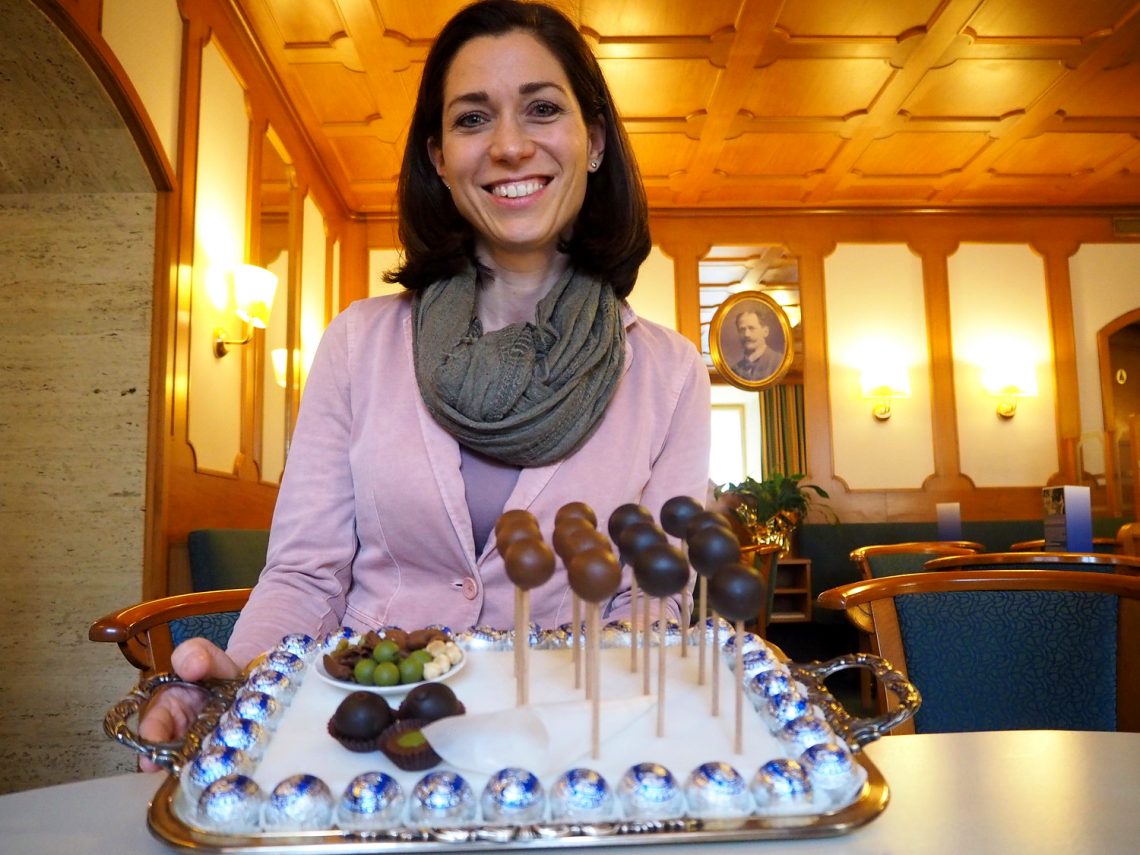The secret of the original Mozartkugel
The windows of the charming old house situated on one of the little cozy squares of Salzburg gleamed with beautiful Christmas decorations.
All of my senses were attacked by the artfully displayed cakes, and cookies, and the door leading to the confectionery was on constant swing as customers were coming and going—busy times! Most of them only ordered a couple of cakes or chocolate for take-away as the place only has a few tables in the back, where the more leisurely visitors can enjoy their hot chocolate.
I had been preparing for this meeting as if going for a date, a long-awaited rendezvous!
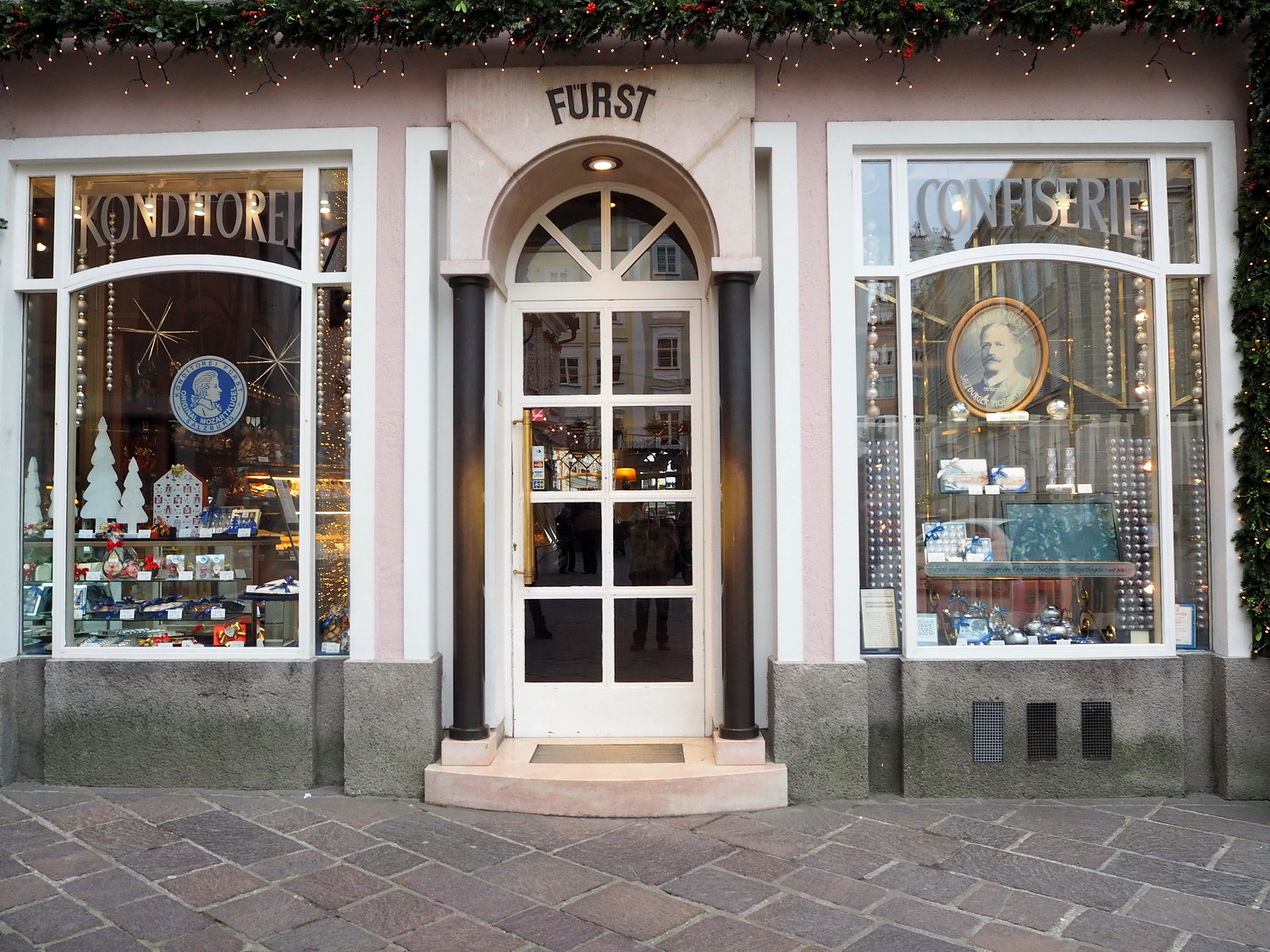
The secret of word famous brands
Although I am not a chocoholic, I am definitely impressed by brands that have survived through decades and generations in our ever-changing environment. The curiosity to find their secret is what led me to the Waldorf Hotel in New York a long time ago. With the help of my press-ID I requested an interview from the hotel’s PR manager. I was prepared for a polite and rather boring guided tour, but I was so curious to see the rooms that I was ready to take it on. It all went as expected – formal and boring. When the PR manager asked me if I wanted to see the kitchen, I said yes, of course. That is where we ran into the head chef, who had some free time on his hands and spoke with so much enthusiasm that it completely blew me away. He did not care that I was simply an unknown blogger from Hungary. He was zealous about his work and clearly wanted to share his passion! He even showed me the roof terrace where they grow their herbs and keep a few beehives! I simply loved the whole experience, it was truly special.
But let’s go back to Salzburg.
The Mozartkugel is a kind of miracle on its own. It has been produced for more than 100 years, and its popularity is unbeatable. I was hoping to get a glimpse of its secret when I requested an interview. The original recipe was developed by Paul Fürst, and since its creation it has been carefully guarded. I had the chance to meet Doris Fürst, the lovely wife of the current owner, Martin Fürst’s, a fifth generation member of the Fürst family.
A little gastro-history
Paul Fürst studied in Vienna, Paris, Nice and Budapest. Unfortunately, the exact location in Budapest is not known. He returned to Salzburg in 1884 where he grew up and opened his confectionary in Broadgasse 13—the exact location where I am now, listening to his story 132 years later while sipping on my coffee.
In 1890 Salzburg was preparing for the commemoration of the 100th anniversary of Mozart’s death. Many craftsmen had the idea to introduce a new product named after the famous citizen. Some of these launches were rather entertaining like the Mozart toothpaste or Mozart shoe cream. The confectioners were creative as well. Among the different Mozart-creams and cakes, Paul Fürst introduced his very own Mozartkugel that year.
This was the first perfectly globular sweet and its concentric layers were very innovative at that time. The inner core was made of green pistachio-based marzipan which was wrapped in nougat and then finally dipped into the finest dark chocolate with the help of a stick. The stick was only removed once the chocolate had stiffened and the little hole was cleared with some chocolate. This same process is still used today. It is this small, stuffed hole that proves we are eating the original Mozartkugel— the heavenly ball is only prepared hand-made in the Fürst confectionery.
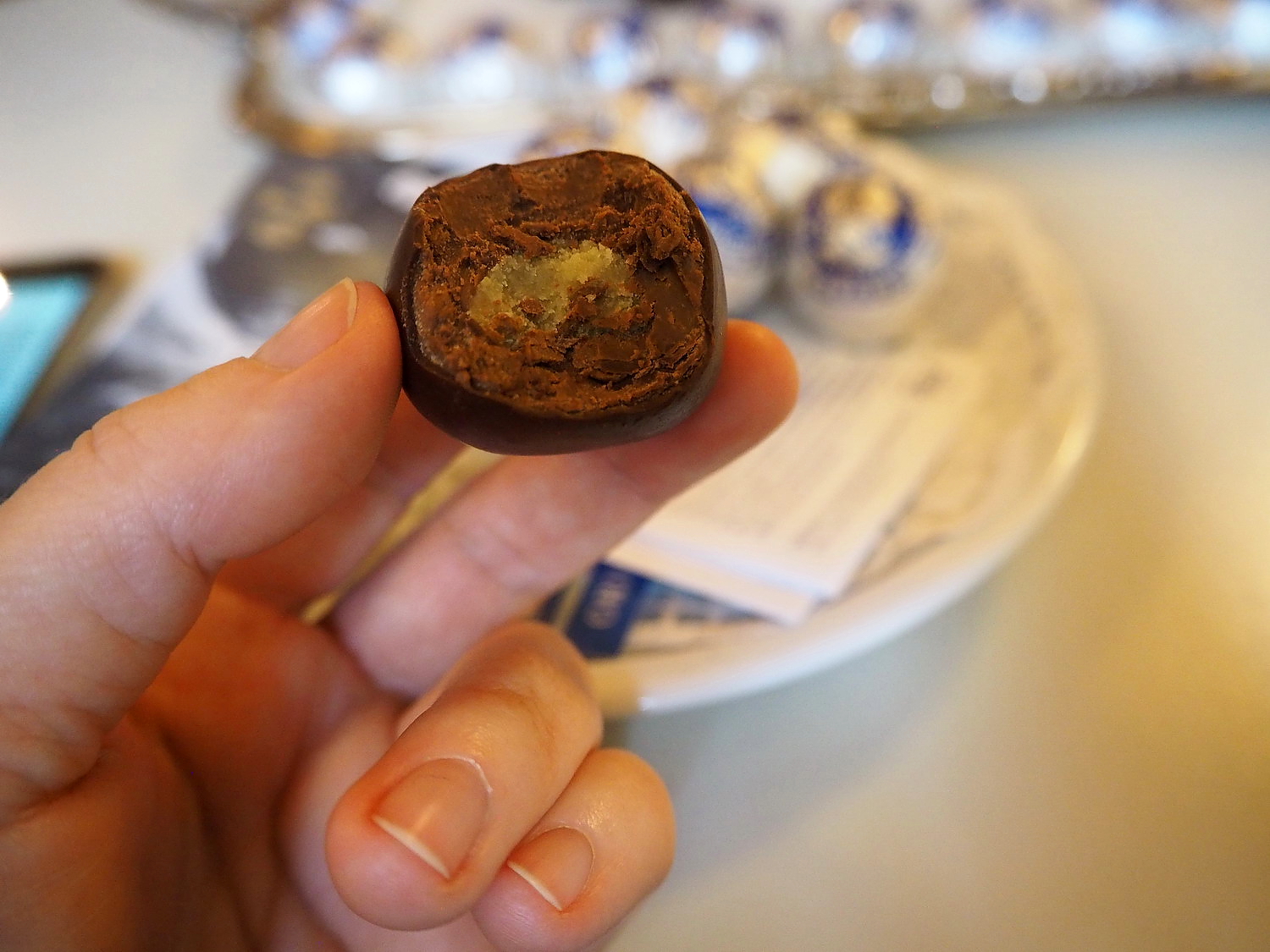
The consequence of the missed trade-mark
These neat chocolate balls became wildly popular, and many others started to copy them. Paul Fürst did not patent his product. Doris said that at that time, is was not common to patent chocolate creations, but also that he probably did not expect his invention to become such a huge hit. The Paris World Expo in 1905 made the Mozartkugel world famous, where it was awarded with golden medal. Right away, everyone began to copy the kugel and still do, but all these other products are not a match for the original. The copies are mass-produced, they have different shape, the proportions are different. In the original kugel the marzipan can hardly be tasted. Doris Fürst said even people who do not like marzipan might like their Mozartkugel.
The candy itself was not the only thing that was copied. The wrappers were mimicked as well. Very similar blue and silver clad copies are on sale everywhere—easy to make a mistake! As a result, there have been plenty of legal battles over the years regarding the recipe, distribution, packaging and exact naming. In 1996 Norbert Fürst won his case and now only the Fürst family is allowed to distribute bonbon tagged as “original Mozartkugel from Salzburg”. One might get the impression that it is difficult to find the original sweet and thorough attention is needed while purchasing, but this is not the case. The original kugel is only available in one of the four confectioneries in Salzburg operated by the Fürsts.
And this is the point where I became totally enchanted by what Doris Fürst had to say.
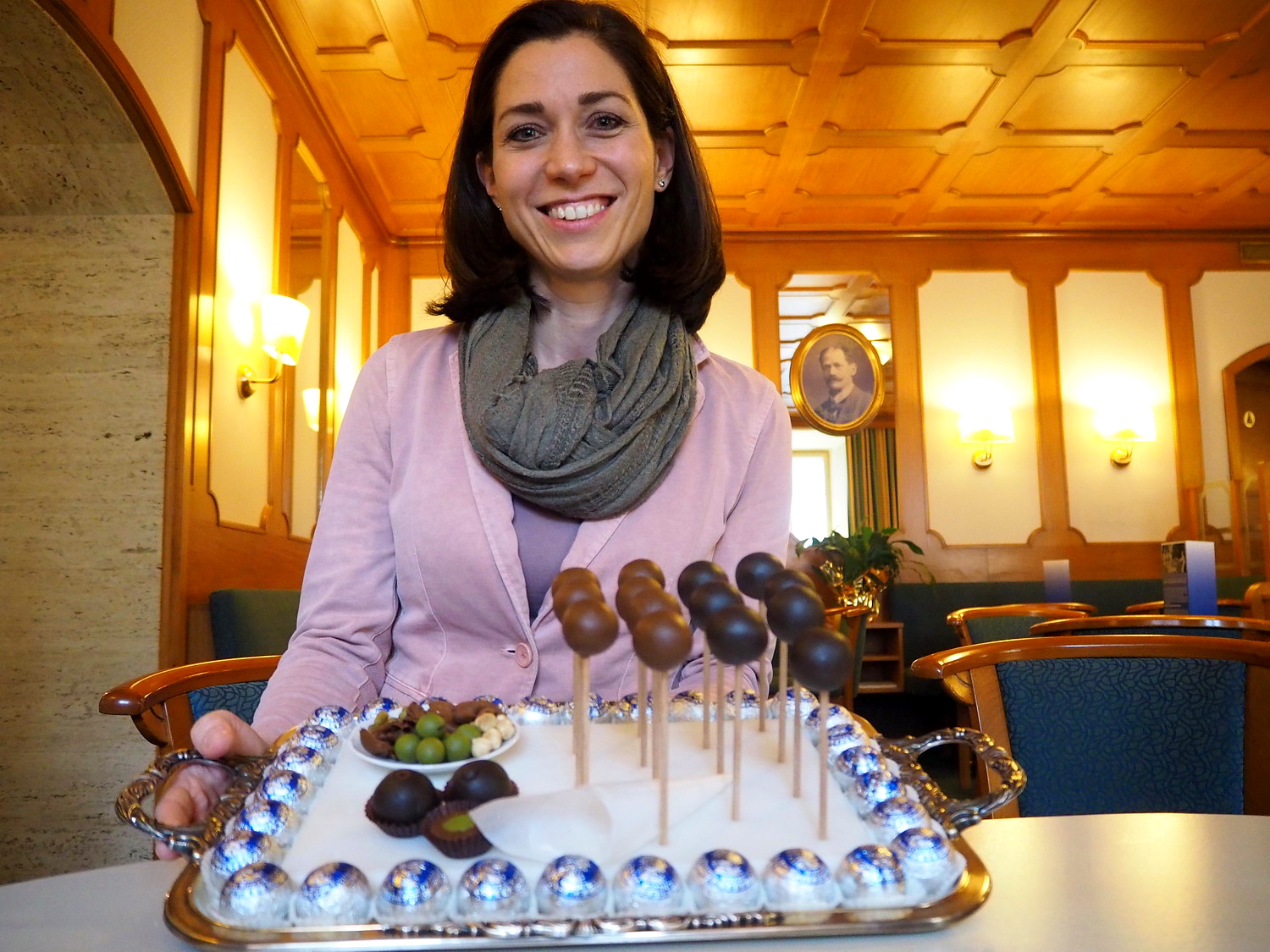
Expansion is not everything!
Doris stated that their bonbon has no preservatives, and since they only use fresh ingredients of highest quality, it has a shelf life of only 6-8 weeks. This is the reason why they do not export their product to the USA or Japan, although the market potential is huge. They simply think that the long airfreight could damage the product. They do not have a shop in Vienna or distribute to other commercial outlets in Europe for the exact same reason. They only deliver private orders in Europe because their philosophy is that they only want to sell sweets which are produced under the family’s direct supervision.
I had to ask the obvious—is it not frustrating that the competitors’ products are widely available and they obviously make huge profit on them? But Doris just smiled away and said that they are not interested in how others run their business. The Fürsts are only interested in making their own product as perfect as possible.
Doris’s husband had no siblings. They are the only heirs. Their only daughter is only 9 years old, so the question is evident, who will inherit the family empire? Doris had an easy-going approach here as well. She said that their daughter loves to be around and about the factory, and if she feels like it, of course she can take on the running of the business when time comes. But there is no pressure. It is her life, and she needs to decide what she wants to do with it.
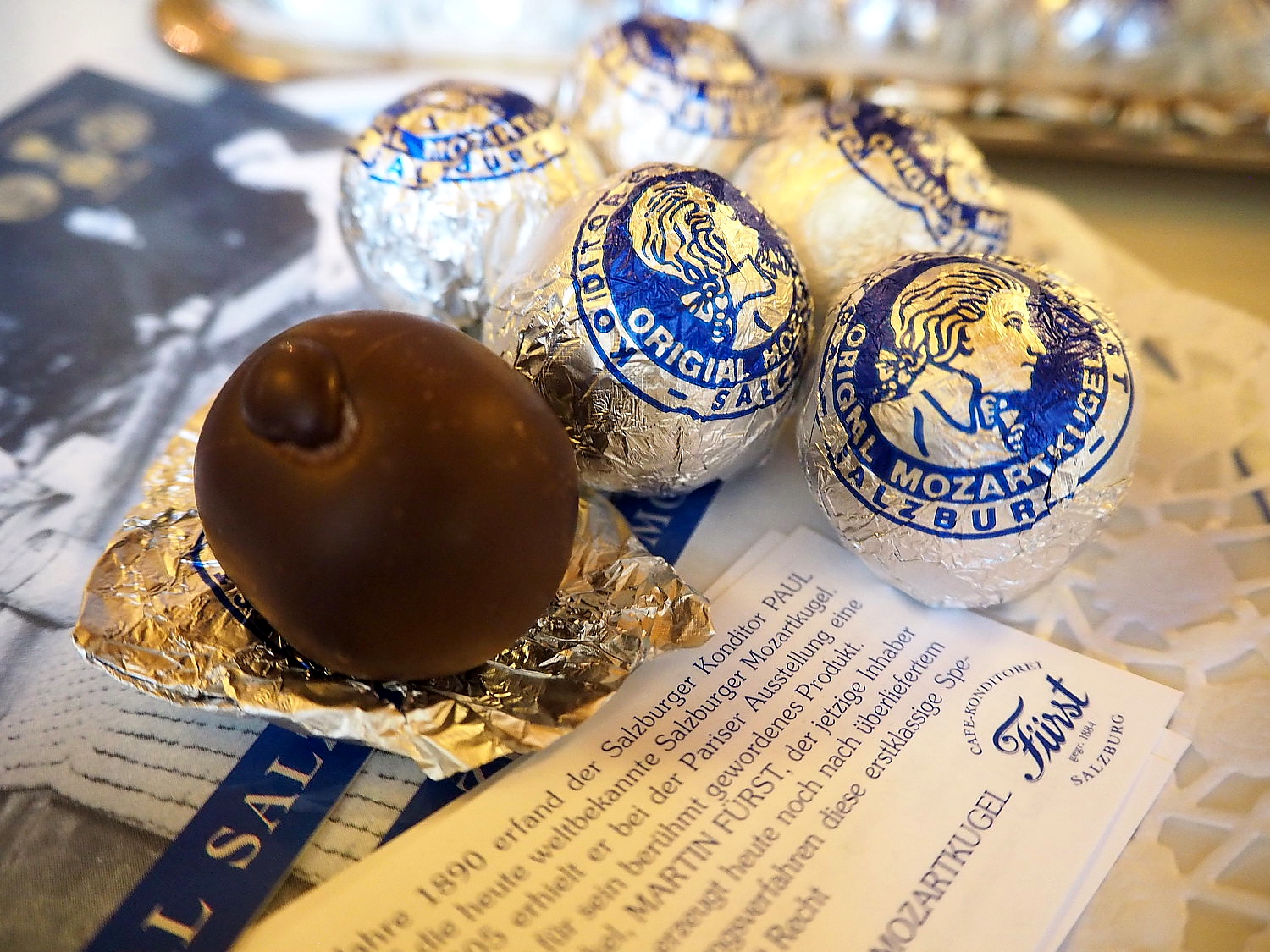
When royalties meet – Mozart and Eszterházy
Do you know any Hungarian sweets? I change the topic. Doris was a little uncertain in regards to chocolate and needed a little help, but the name of Karl Harrer, the chocolate maker from Sopron with Austrian background, rings the bell.
Doris has a surprising knowledge of Hungarian cakes though and says without any hesitations that her favorite is the Eszterházy-cake. Named after a prince it is the cake of royals, the Eszterházy is made of buttercream, spiced with cognac and vanilla, and sandwiched between layers of almond meringue (macaroon) dough. She quickly serves one to test and taste. They are perfect, of course! Doris asked me to pronounce the name a few times to help her get the hang of it. She said she’s always been uncertain how to say it correctly (no wonder J). Doris also told me that her second favorite cake, the Dobos cake, is also Hungarian. The Dobos is a sponge cake layered with chocolate buttercream and topped with crispy caramel.
As I tasted the kugels, I ask about her recommendation of what to drink with them? Coffee, liqueur or maybe desert wine? According to Doris, the harmonies of these desserts are best enhanced when paired with a cup of nice coffee. This is also how she likes to eat her bonbon.
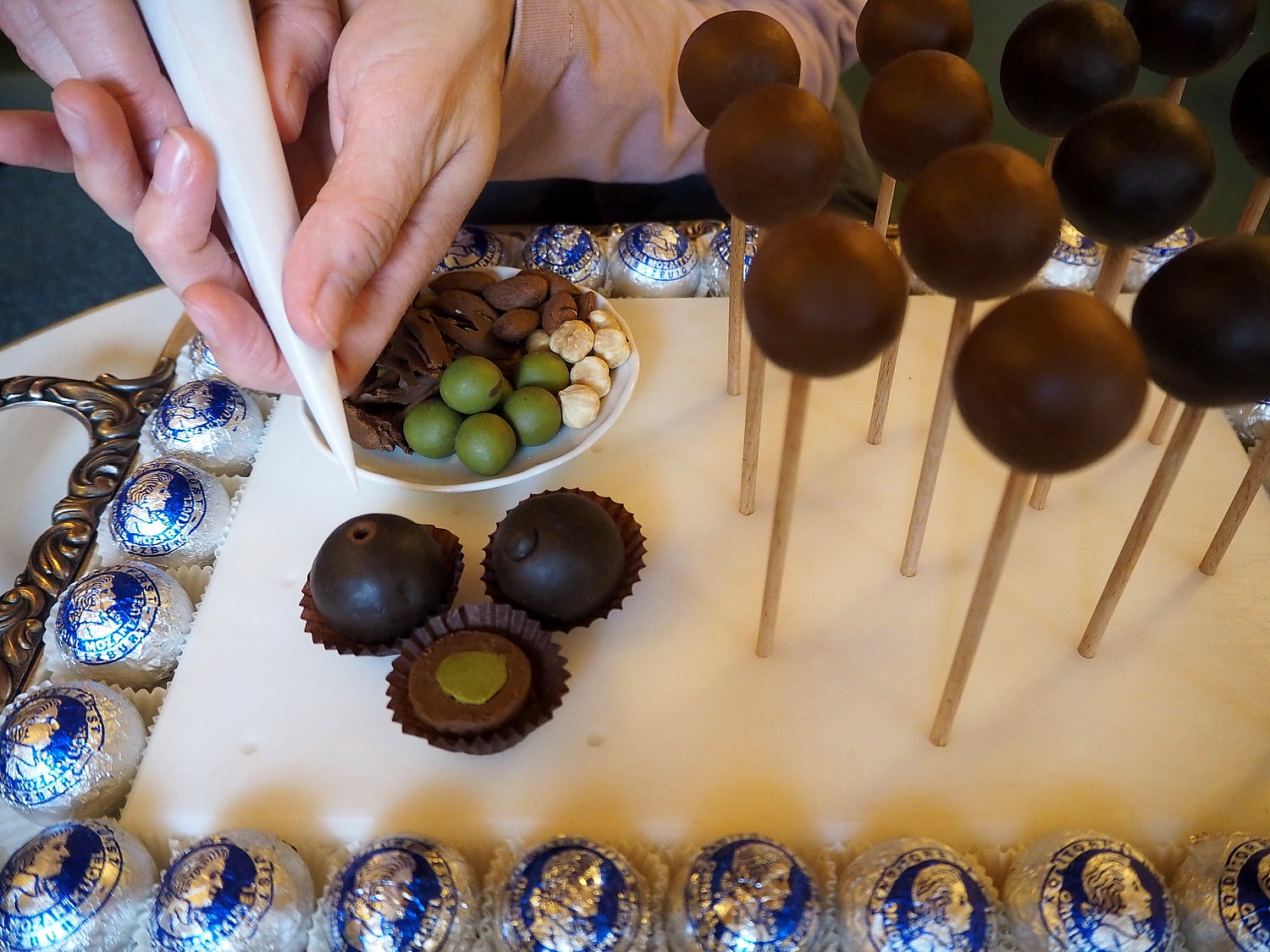
Original recipe, proven suppliers and respect of tradition
I also wondered their opinion of the increasing demand for gluten and lactose-free products? The Mozartkugel itself does not contain gluten, but as it is produced in a confectionery and therefore, it might contain it in traces of these allergens. It does, however, contain lactose, and there are no plans introducing lactose-free version. They simply want to stick to the original recipe.
But not only the recipe, the suppliers are constant as well. The pistachios are sourced from Sicily, the hazelnuts from Turkey, and the almonds are from Italy and Spain. All of the ingredients come from well-established and reliable suppliers.
Through the four shops and mail-deliveries to private consumers they sell 3 million kugels a year. 15 years ago, this number was only a million. During the last one and a half decades’ sales have ramped up increasingly. 2006 was a particularly strong year, when the city celebrated the 250th anniversary of Mozart’s birth and staged more elaborate Salzburg Festival. The festival already marks the main season, in addition to the Advent period and the peak period of August sales.

Another secret?
That left me with only one question left to answer: How can Doris be able to maintain her attractive figure when she spends most of her time among the pastries and sweets? She laughed and told me that the answer is simple. There is no elevator in the old building, and she is on a constant move between the four floors. The ground floor is where the shop is situated and the upper floors house the packaging area and offices. The factory is in the next building, and since she is supervising all aspects of production and the work of the 50-strong staff, she is never idle.
True to herself, the ever-smiling Doris Fürst quickly bid her farewell, and I purchase a couple of Mozartkugels for the road. I could not go home empty-handed after all from a place like this! No secrets were revealed during my visit, which could explain why this product stands out in a crowded market and how it has maintained its popularity over more than a century. Maybe the only secret is the uncompromised respect of quality.

